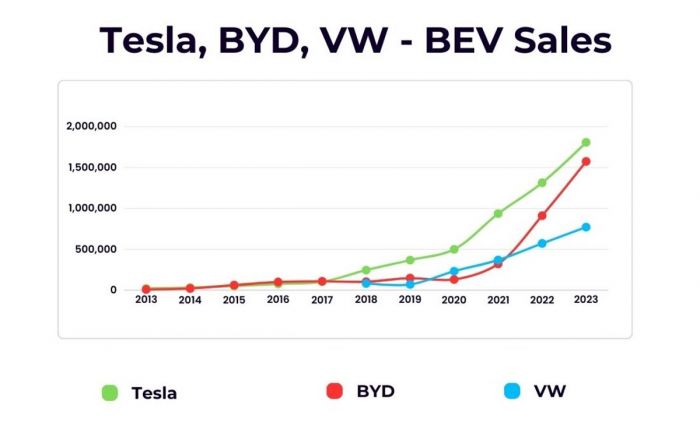The Honda 400EX signaled the strong resurgence of sport ATVs in the market, especially in the four-stroke quad segment in the 2000s. It had a powerful air-cooled, single-cylinder, four-stroke engine mated to a 4x4 final drive. At its peak, the vehicle is capable of generating an estimated 25.4 hp and its speed can max out at 72 mph.
Since its arrival to the present, it remains handy in both recreation and work applications. Despite having plenty of much newer alternatives nowadays, this unit still enjoys huge demand in the used ATV market.
Despite all the hype surrounding it, there have been some problems associated with the Honda 400EX. In this article, we will investigate the most common issues raised by its owners and show you ways how you can go around them.
.jpg)
1. Noisy Timing Chain
A noisy timing chain in an ATV could be due to several factors. The most common causes of this problem in the case of the Honda 400EX are incorrect tension, poor lubrication, or damaged parts.
If the problem is due to incorrect tension, the first thing you should do is check the adjustment. If the tension is too loose, it can cause the chain to rattle and eventually fail. If the tension is too tight, it can damage the engine. To adjust the tension, you will need a special tool called a tensioner.
If poor lubrication is the cause of the noise, you will need to clean and lubricate the chain. This can be done with a simple degreaser and a good-quality chain lube.
If the problem is due to damaged parts, you will need to replace them. The most common damage is to the tensioner itself, but the chain and sprockets can also be damaged. In some cases, it may be necessary to replace the entire timing chain assembly.
No matter what the cause of the noise is, it is important to have it fixed as soon as possible. A noisy timing chain can lead to engine damage and eventually failure. If you are not sure what is causing the noise, take your 400EX to a qualified mechanic for diagnosis and repair.
2. Ticking Sounds on the Valves
A common complaint of Honda 400EX owners is a ticking noise coming from the engine. This can be a very frustrating problem, as it can be difficult to pinpoint the exact cause. However, there are a few possible causes of this problem, as well as some potential solutions.
When it comes to the Honda 400EX, this is usually blamed on its valves that are not closing properly or are stuck open. This can be due to a variety of things, such as a dirty valve, debris in the valve train, or a bent valve. If this is the case, the best solution is to take the ATV to a qualified mechanic who can clean or replace the valves as necessary.
Another possible cause of a ticking noise in the engine of a Honda 400EX is that the piston rings are worn out. This can be caused by excessive wear and tear, or by using low-quality oil. If this is the case, the best solution is to replace the piston rings.
Finally, a ticking noise in the engine of a Honda 400EX can also be caused by a problem with the camshaft. This can be caused by a variety of things, such as a dirty camshaft, a bent camshaft, or an incorrectly installed camshaft. If this is the case, the best solution is to take the ATV to a qualified mechanic who can clean or replace the camshaft as necessary.
If the problem is prolonged, it can cause further damage to the engine, which can lead to expensive repairs. In some cases, it may even be necessary to replace the entire engine. So, it is important to take action as soon as possible if you are hearing a ticking noise coming from your Honda 400EX engine.
3. Weak Sub-Frame and Swingarms
The Honda 400EX is a versatile and powerful ATV that can be ridden on a variety of terrain. However, it is important to be aware of the symptoms of weak sub-frames and swingarms in order to avoid potential problems with the ride quality of the ATV.
One symptom of weak sub-frames and swingarms is vibration in the handlebars. This can be caused by loose bolts or damaged bushings. Another symptom is a loss of traction, which can be caused by worn-out tires or broken suspension components.
The possible causes of these problems are numerous, but some common ones include improper maintenance, excessive wear and tear, and extreme riding conditions. Some, however, blame it on Honda's engineering, particularly on the 400EX.
The best way to avoid these problems is to regularly check the condition of the ATV and to follow the manufacturer's recommended maintenance schedule. As an alternative, one way to reinforce the weak sub-frame and swingarms on the Honda 400EX is to use mods.
There are a number of different mods that can be used, but some of the most common ones include adding stronger bolts, reinforcing the bushings, and the installation of skid plates.
If the problem is not fixed, it can lead to further damage and affect the overall ride quality of the ATV. It is therefore important to act as soon as possible to avoid these issues.
4. Head Gasket Leaks
The head gasket on a Honda 400EX can leak for many reasons. The most common cause in some models is a blown head gasket, which can be caused by an overheated engine or by continuing to ride the ATV with a low coolant level. Other causes of head gasket leaks include physical damage to the gasket or an improperly installed gasket.
Symptoms of a head gasket leak include low coolant levels, overheating, white smoke from the exhaust, and milky oil. These symptoms can lead to serious engine damage if the problem is not fixed.
To fix a head gasket leak, the first step is to identify the source of the leak. If the head gasket is blown, it will need to be replaced. If the gasket is damaged, it may be possible to repair it. Once the source of the leak has been fixed, the coolant system will need to be flushed and refilled.
If the head gasket leak is not fixed properly, the engine will continue to overheat and will eventually fail. So, better head down to your mechanic for repairs if you are on the receiving end of this problem.
5. Faulty Electrical System
Many ATVs are no strangers to electrical issues. These are due to their heavy usage, exposure to bad environmental conditions, or neglect. However, many consider these to be a common occurrence in the Honda 400EX.
One of the most common problems with the electrical system on the 400EX is a failing stator. This can cause all sorts of ride quality issues, as it prevents the ATV from generating enough power to run properly. The possible solutions include replacing the stator or installing a new one altogether.
Another common suspect is a faulty battery. This can cause the ATV to lose power and eventually stall. The guaranteed solution for this is to replace the battery.
Moreover, faulty fuses are one more problem you should be aware of in the 400EX. This can cause the ATV to lose power and eventually stall. Possible solutions to this problem include replacing the fuse.
Furthermore, a common problem with the electrical system on the Honda 400EX is loose or damaged wiring. This can cause all sorts of ride quality issues, as it prevents the ATV from generating enough power to run properly. Possible solutions include tightening or replacing loose wires, or installing new wiring altogether.
Lastly, a failing Capacitor Discharge Ignition (CDI) box is also quite common in the 400EX. This can cause all sorts of ride quality issues as it prevents the ATV from generating enough power to run properly. Among the possible solutions to this problem include replacing the CDI box.
No matter what is causing the electrical issues in your ATV, it's best to take it to a technician for repairs immediately.
Conclusion
The Honda 400EX ATV has generally high approval ratings from owners and enthusiasts alike. Sure, there have been bad apples along its production, but that does not mean that you can't fix or reduce your risk of encountering them.
As shown here, there are plenty of remedies you can apply to the common problems linked with the 400EX. For sure, your mechanic can also add more to these problems as these are not exactly a one-size-fits-all solution and their applications may vary depending on several factors.
Either way, you can ensure the best riding performance and quality of your ATV by having any problem that will pop up along your way fixed without further delay. Doing so will hinder them from affecting the other parts of your vehicle and will prevent them from sprouting into more expensive issues in the future.
Likewise, always riding responsibly and following the basic maintenance routines is another way to ensure the best out of your 400EX.
About the authors
The CarAraC research team is composed of seasoned auto mechanics and automotive industry professionals, including individuals with advanced degrees and certifications in their field. Our team members boast prestigious credentials, reflecting their extensive knowledge and skills. These qualifications include: IMI: Institute of the Motor Industry, ASE-Certified Master Automobile Technicians; Coventry University, Graduate of MA in Automotive Journalism; Politecnico di Torino, Italy, MS Automotive Engineering; Ss. Cyril and Methodius University in Skopje, Mechanical University in Skopje; TOC Automotive College; DHA Suffa University, Department of Mechanical Engineering






Add comment